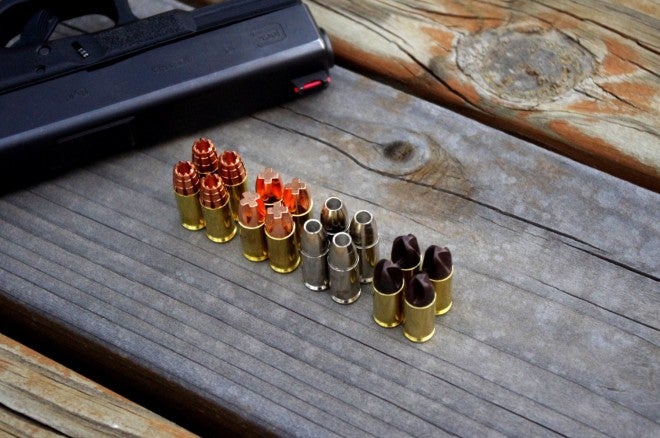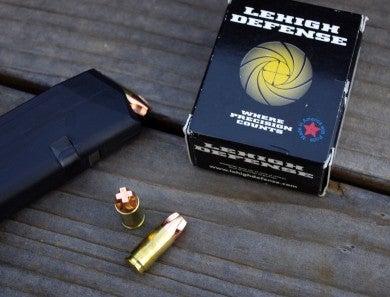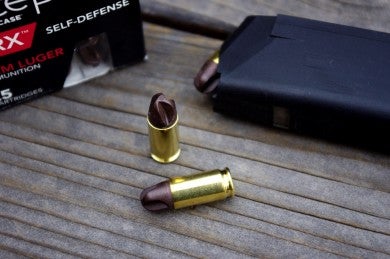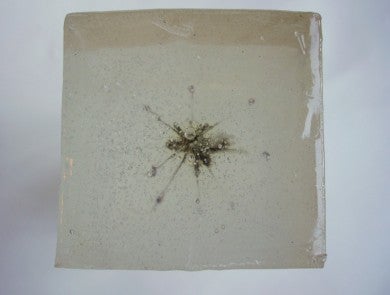Background
This is a six part series of which this is PART 6. (you can find links to the rest of the parts at the end of this article).
Thomas Gomez and I were approached about doing a test shoot of four different defense rounds:
- 9 millimeter Radically Invasive Projectile, R.I.P from G2 Research.
- 9 millimeter Xtreme Penetrator from Lehigh Defense.
- 9 millimeter Inceptor ARX from Polycase
- 9 millimeter Civil Defense from Liberty Ammunition.
The company that made the request, strangely, was not a manufacturer–it was Clark Armory. They were interested in having TFB perform an independent review (though pseudo-scientific as we will explain later) of some of the defense rounds that they sell. Of course we accepted.
Disclosure: They did not pay for this review though they did send us two boxes of each of the four rounds, two ballistic gels from Clear Ballistics (and the necessary stuff to reset the gels for reuse). All of the other materials we provided along with nine range trips, and the countless hours Thomas Gomez spent melting and resetting the gels.
Overall Observations
To date, this has probably been one of the coolest reviews we’ve had the chance to do. Seriously, thank you Sawyer and Matt at Clark Armory for providing the materials for this process.
Since we could “reset” the gels, we could have situated bone in the gel for a better simulation of center mass on a human, but that would have introduced a lot of variability to the path and fragmentation of the wound. There was even an initial discussion about shooting into some beef–but, seriously, why waste delicious meat?
Thomas G’s Thoughts
My favorite round was the Xtreme Penetrator from Lehigh Defense followed by the R.I.P round from G2 Research. I would load both rounds in my magazines. The first 6 rounds out of my barrel would be the G2 R.I.P round followed by the Xtreme Penetrator. The logic being, if I haven’t put a threat down in 6 rounds, the threat is probably taking cover and trying to get rounds in me. From testing we found the Xtreme Penetrator had no problems punching through a solid medium. The larger wound channels, though variable, would also do a lot of tissue damage.
The Polycase Inceptor was a great round and did very well during testing. If I was told, “this is the round you will be shooting for the rest of your life, deal with it,” I would shrug my shoulders, load up my Glock and get on with life. The Inceptor is a good round. It tumbled during bare gel testing, creating a larger wound cavity and still penetrated 15 inches. It didn’t do very well on glass. Personally I put a premium on the ability to shoot through automotive glass, and had an instance in my life where I had a drunk/high mugger aggressively approach my vehicle demanding cash while waving a metal rod. The Glock 21SF being pointed at his face as well as the strong verbal commands deterred the mugger. I may have had to take shot through my windshield.
The Civil defense from Liberty Ammunition was the worst round we tested. It failed the F.B.I test and didn’t do anything well. It would created a hell of a surface wound but would fail to penetrate bone and muscle and hit major organs.
Tom R’s Thoughts
Personally my favorite round is the Inceptor. I think it showed the best balance of all of the rounds that we tested. While it did deep penetrate on bare gel, it seemed to stay in the “body” for the other tests. Based on the video showing the cavitation injury, it had a decent wound channel in all cases.
My next favorite was the Lehigh Defense. Everything from the aesthetic of the design to the sheer consistency was great. The reason it is not in my top position is that it punched through everything and still went through the entire length of gel. You should ALWAYS be sure of the target and of what is beyond it, doubly or trebly so with this round because it is going to go through. I would have a slight concern about this in the confines of a dwelling. I think it still causes a great wound channel, the penetration is just a concern.
The G2 RIP is just a messy round. Yes it creates a lot of damage as the trochars detach and tumble, assuming the material allows for it. I just felt it did not perform consistently through all of the materials. It did fine in bare gel and heavy clothing, but in drywall it behaved like a penetrator. I understand that is what their intention was with the round—that it should adapt to the first barrier it encounters. My feeling is that I want consistent behavior when it enters my “terminal” objective. I don’t want a “sometimes penetrator” or a “sometimes fragmenter”—I want it to do one or the other. Great marketing and very aggressive looking round, though.
My least favorite was the Civil Defense. While it is the fastest of all of the rounds, it is just too light. It seems to have similar intended behavior to the G2 R.I.P., in that it adapts to the medium, but in our tests it didn’t do terribly well against non solid barriers. The round really disintegrated and the little bit of slug that occasionally made it “deep” into the gel was minimal. According to the FBI test, we are looking for twelve to eighteen inches of penetration and this round just did not perform in our tests. That said there are reports of it causing really disturbing injuries to a side of beef.
Overall I was most interested in the cavitation injuries caused by each of the rounds, and showing the comparison of that when interdicted by each of the media that we shot against. We can open the debate (and invite in the trolls 🙂 ) about the suitability of calibers and platforms. But at the end of the day, as a good doctor friend of mine explained “With a pistol round, pick an organ, punch a hole, repeat as necessary”. The cavitation provides damage outside of the direct wound path, increasing the likelihood of disrupting an organ. Assuming you can accurately put any of these rounds into a body, where you want them, you will likely disrupt your opponent. Some of them will do a better job and let you be a sloppier shooter. Despite the results of our testing, a Liberty Civil Defense put in an attacker’s orbital window will still convince them to break off from their shenanigans. Ultimately, find the rounds you can afford and want to carry, assess your threat profile, and train, train, train.
Conclusion
We hope you readers have enjoyed this multi-part article series. Opportunities like this are generally only available when we have sponsorship from the industry and this one is different in that the sponsorship was not from a manufacturer wanting a review of their product, but a retailer wanting to answer some questions about a product they sell.
Articles in Series
Note: The below links are not immediately live. Each part will be released a day apart (by Dec 7th all should be available).
Introduction
Session 1 – Bare Gel
Session 2 – Heavy Clothing
Session 3 – Automotive Glass
Session 4 – Drywall
Observations and Conclusion
 Your Privacy Choices
Your Privacy Choices





